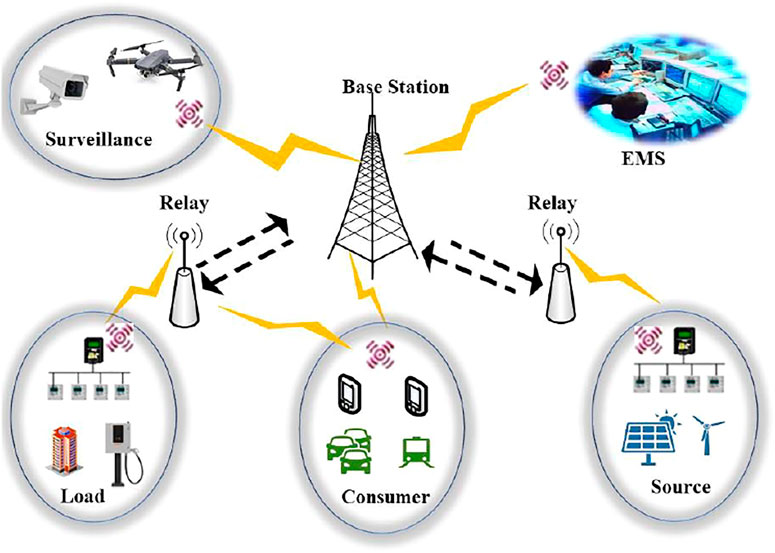- MON - SAT : 9AM - 7PM
- Thane & Pune
- sales@technoeyenet.com
What is Wireless Communication? Types and Advantages
In the post-pandemic era, wireless communication has become an inseparable part of humankind. Wireless communication became a blessing to this planet during and before and after the pandemic. During the pandemic, it had become crucial for all businesses to go online to survive in the market. All this online communication has become easy due to wireless communications like satellite, infrared, broadcast, microwaves, wi-fi, mobile, Bluetooth communication, and many more.
The network is the interconnection of computer systems, peoples, and Internet of Things devices with the support of communication channels. These communication channels can be wired or wireless. Here, we will dive deep into the wireless communication channel and its types and will explore the advantages of wireless communication.
What is wireless communication?
Wireless communication includes the transmission of data over a distance without the assistance of wires, cables, or some other types of electrical channels.
In wireless communication, the transmission of data occurs through electromagnetic signals or waves as communication media. The electromagnetic spectrum is divided into channels for data transmission. This type of network penetrates the walls and has no limitation on location and spaces. There are various advantages of wireless communication that are discussed below that a business must take advantage of. And wireless connectivity is the best option for the long run, as it is easy to expand and flexible.
There are various types of wireless communication that are discussed below to get the in-depth of what it is and how it works. So let’s dive deeper into its types:

What is wireless communication?
Wireless communication includes the transmission of data over a distance without the assistance of wires, cables, or some other types of electrical channels.
In wireless communication, the transmission of data occurs through electromagnetic signals or waves as communication media. The electromagnetic spectrum is divided into channels for data transmission. This type of network penetrates the walls and has no limitation on location and spaces. There are various advantages of wireless communication that are discussed below that a business must take advantage of. And wireless connectivity is the best option for the long run, as it is easy to expand and flexible.
There are various types of wireless communication that are discussed below to get the in-depth of what it is and how it works. So let’s dive deeper into its types:

- Bluetooth:
Just like infrared, Bluetooth also has distance constraints. Bluetooth is used for a short and medium range of communication. Bluetooth is mostly used for file and data transfer wirelessly from one device to another. Examples: wireless earphones, wireless keyboards, and mouse, etc. - Mobile Communication:
Mobile communication through wireless medium mostly takes place through satellites in space and transmitters and receivers on the surface of the earth. Signals of mobile communication take place through a single frequency band. Example: cellular mobile communication. - Wi-Fi:
For Wi-Fi communication, a device called a router is installed and configured. This device creates a small network that allows users within proximity of the router to access the network. This network is protected via a password for securing the network. Example: Mobile phones and laptops, etc using Wi-Fi networks.
Now we know the various types of wireless communication, now let’s dive into its advantages of it.
Advantages of wireless communication:
- Wireless:
Yes, as the name suggests that this communication takes place through electromagnetic signals that are transmitted by transmitter devices within the air, physical environment, and atmosphere. This type of communication does not need any physical wires for the transmission of data from sender to receiver. There is no physical connection between the start and end points which is an advantage over distance and space. Wireless transmission does not have limitations on distance and space.

- Flexible:
Wireless connectivity can infiltrate the walls and are easy to install anywhere according to our choices. It is also easy to expand the connectivity range due to no use of any physical components in this. This network enables us to communicate regardless of any location constraints. For a normal person, it allows us to work from anywhere we want where there is a wireless network. - Economical:
First, there is zero usage of wires for data transmission from the transmitter to the receiver. Secondly, the devices that need to be configured for the transmission of signals are cost-efficient in long run. Due to neck and neck competition between wireless device manufacturers, many wireless devices are inexpensive. The installation and maintenance cost is also cost-efficient depending on the scale of the network. In short, fewer physical devices, so less cost. - Mobility:
Wireless networks are mobile which means they are easy to carry and also they can be reinstalled in some other suitable place. It also gives independence to move around by still being connected to the network or the system. It provides mobility of usage while still being connected to the network, unlike a wired network. - Easy Installation:
As there are no wires, so no messy work. Just need some network devices and a negligible amount of wires to set up a wireless network. Installation and configuration are easy due to less number of wires. And also the time taken for wireless connectivity is way less than the time taken to create a cable-based network. This is very helpful when a network of any business is growing rapidly. The scalability of this wireless network is high. - Geographic Advantage:
No boundaries for wireless networks. Geographical landscapes are not a constraint for wireless connectivity. This communication goes beyond the walls and distances that allow us to access the network from anywhere around the world. - Accessibility:
Wireless connectivity will allow users to communicate on the move without any wires or adaptors to access the network. It gives freedom to roam anywhere while still being connected to the network. - Consistency:
In wireless communication, there is no contribution of wires and cables so communication failures aren’t occurred due to the mischief of these cables which might be caused in light of the environmental circumstances, an ordinary decrease of metallic conveyors, and an intertwining of cables.
Conclusion:
Whether it is wired or wireless communication, both have their advantages. It depends on the requirements of the business and which communication you want to go for. For a growing business, in a long run, wireless communication would be the best choice to go for. Due to advancements in technology and security solutions, wireless communication has become more secure than ever before. Wireless communication has become the number one choice for any business due to strong security protocols that effectively guard organizations’ confidential data and network access.
Which type of communication do you prefer between wired and wireless? Let us know your answer in the comment below.
If you are looking to build a Complete Wireless Communication Solution for your business, then your search ends here. Because Techno Eye is here for you to build a smart and modernized wireless solution that is easy to install and maintain. And hold on, after installation our work is not done, we provide 24/7 customer support to each of our clients and also provide maintenance services for the IT Infrastructures.
Connect now and let’s discuss wireless communication needs suitable for your business.

Services
Solutions
- Data Centre Solutions
- EBPX Intercom
- Video Audio Conferencing
- IT Security Solutions
- Networking Solutions
- Structured Cabling
- Wi-Fi Solutions
- Server & Backup Solutions
- CCTV Surveillance System
- Biometric Attendance Machine
- Door Access Solutions
- Video Door Phone
- Internet Lease Line
- PRI & MPLS
- Webserver & Storage Solutions
Connect With Us
- +91-9503357739
- sales@technoeyenet.com
-
Kapurwadi
SB27, Second Floor, High Street Mall, Kapurbawadi Junction, Thane(W)-Pincode 400607 -
Pune
BR1- 412/413, 4th floor, B Wing, Jai Ganesh Vision Complex, Akurdi, Pune, Maharashtra 411035 -
Bhiwandi
202, I-Wing, Manav Complex, Reti Bandar Rd, Phase II, Kalher, Bhiwandi, Maharashtra 421302 -
Tingre Nagar, Pune
No: 7, Ground Floor, Samvidh Society, Plot No: 29, Landmark 7B,, Vidya Nagar Road, Tingre Nagar., Pune, Maharashtra 411032